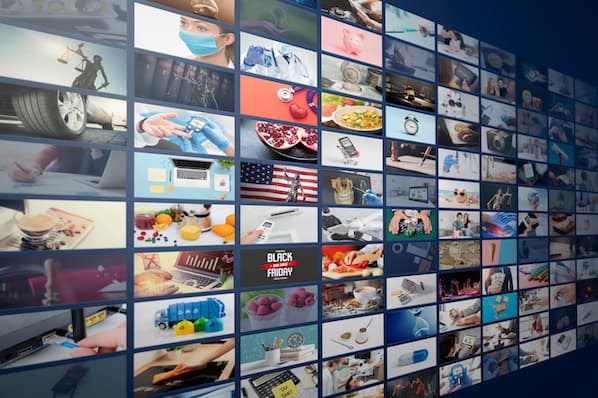If you've ever scratched your head at the terms "programmatic" or "omnichannel," you've likely already heard a little about what ad tech does (though you may not have even realized it). Programmatic advertising, for instance, buys target audiences instead of time slots: Think about buying ad space that reaches a particular demographic wherever it is instead of buying a prime time TV spot and hoping the right people are watching.
Omnichannel marketing reaches target consumers across all channels -- mobile, video, desktop, and more -- within the context of how they've interacted with a brand (those first seeing an ad will receive a different message from those who have engaged with that brand a number of times). Omnichannel and programmatic aren’t the only two tools within ad tech, but they are two of the most revolutionary.
That said, ad tech is designed to help advertisers make better use of their budgets. Ad tech methodologies deliver the right content at the right time to the right consumers, so there's less wasteful spending.
Today, ad tech methods supported by influential data allow agencies to make wiser placements that effectively position advertisements when and where they are needed most. This helps reduce wasted efforts and gets ads to users at critical touchpoints, meaning it’s helpful for both brands and consumers.
Instead of the standard sort of placement buys, ad agencies can integrate their ads using high-level data and technology. It's a logical next step toward seamless integration and high-impact, value-added placements. And it's redefining how agency planning and strategy teams look at media.
The Benefits of Advertising Technology (AdTech)
Ad tech has plenty of moving parts, which means there are countless opportunities for agencies to set themselves apart. The diversity of ad tech data allows for more granular and relevant targeting and integration. It also necessitates leaning upon trusted ad tech solutions and platforms to get the most out of every ad campaign.
One major effect for agencies and their clients is a noticeable improvement in prospect interactions. Thanks to ad tech, brands can now connect all advertising channels. This means saying goodbye to clunky, unnatural advertising that irritates users and frustrates agencies and their clients. Instead, cross-platform uniformity ensures brands are reaching users consistently and logically.
Ad tech has also allowed retargeting to enjoy growing popularity -- so much that it represents about 90% of all advertising costs. In other words, it's not going away.
The problem is that it can be too intrusive, which leads to reduced effectiveness. By taking advantage of RTB options fueled by ad tech data, agencies can drill down and target only those audiences most likely to convert, without badgering those who aren’t.
Connecting the Dots Between Ad Tech Companies and Agencies
Knowing that they need each other to thrive, agencies and ad tech companies are on a joint mission to figure out how to forge long-lasting relationships. Deeper connections tend to occur naturally through regular communications, realistic expectations, and thoughtful customization.
Communication
Touching base regularly and working transparently between both parties is essential. There can no longer be a "set it and forget it" attitude in the online ad industry.
With new integrations between data, tech, and content, there needs to be consistent party involvement from start to finish. To this end, media publishers are having more discussions with their agency partners about content and other creative efforts than ever before. That makes it imperative for ad tech organizations and agencies to have an "open door" policy.
Expectations
Quick turnarounds are another key factor to keep an eye on in the relationship between agencies and ad tech pros. Everyone wants rapid turnarounds, but sometimes things can get lost when too much is happening at one time, and sometimes quality is compromised.
Do you want something mediocre that's finished tomorrow or something impressive you have at the end of the week? You likely want the latter. Project management helps smooth out the flow between ad tech and agencies and ensures more successful campaigns.
Customization
Imagine you're a consumer who just saw a mobile ad that piqued your interest. When you go to browse on your laptop, you see the same ad. Then you see the same next time you’re on YouTube, then again before your next Hulu binge session. Seeing the exact same content becomes annoying, and your interest inevitably lowers.
That said, there can't be a repurposing of content and strategy across all channels -- that’s a dinosaur-era approach destined to backfire. Agencies and brands are realizing that they need to customize creative assets for each channel and integration. It’s no longer acceptable to have a mentality of "matched luggage" when it comes to media. Agencies can work hand-in-hand with an ad tech partner to achieve exceptional outcomes through data interpretation.
Advertising Technology Trends
1. AI AdTech
Programmatic advertising has continued to grow and one of the evolutions of the process is using automated, artificial intelligence. AI can automate the ad purchasing process so advertisers can target more specific demographics.
As advertising technology becomes more complex, the demand for it to be automated will continue to grow. Not only does it make media buying easier, but AI can also make real-time adjustments across all channels.
2. Self-Service AdTech
One of the latest trends in ad tech is the adoption of new technologies that offer self-serve options. For example, with AdVendio users can significantly reduce operational costs and time needed to manage clients by providing a branded platform for end-to-end ad campaign management. This means low-budget advertisers can scale their business efforts.
This gives advertisers more control and makes it simpler for advertisers to set up and manage advertising campaigns.
3. Header Bidding
Header bidding is an automated auction technology, which allows publishers to sell their inventory to advertisers through many Demand Side Platforms (DSPs) while receiving bids from multiple advertisers simultaneously.
With header bidding, publishers can receive bids from multiple advertisers at the same time. We anticipate this becoming a bigger trend because it ensures that advertisers receive a reasonable demand base price for their ad inventory.
AdTech Solutions
Mobile AdTech
When it comes to finding ad tech solutions, you might consider breaking down what type of advertising you're doing. For example, if you're only going to be advertising on mobile devices, you can use mobile ad tech solutions.
One mobile ad tech solution is Basis. With this software, you can plan, buy, analyze, and streamline your mobile ad campaigns. This software has robust business intelligence, workflow automation, and is powered by artificial intelligence.
Another example of mobile ad tech is Celtra. With Celtra, marketing teams can design, approve, and deliver digital assets for their mobile advertising campaigns.
Online Advertising Technology
Online advertising technology is a solution that will help you advertise online, regardless of device type. A great example of this is AdRoll. With this ad tech solution, you can find more customers, build profitable relationships, protect your customer data, and improve your advertising results.

Another example of online advertising technology is the Google Marketing Platform. You can manage all your campaigns, from search engine display advertising, to retargeting, to display and video campaigns.
Video Advertising Technology
When you're creating your ad campaigns, it's important to be creative and think beyond display search advertising. You can use video ad tech solutions such as Tik Tok Ads. With this solution, you can tap into unique engagement solutions and immersive formats to creatively and authentically connect with audiences around the world.

Another example is StackAdapt. StackAdapt is a self-serve advertising platform that specializes in multi-channel solutions including native, display, video, connected TV, and audio ads.
Native Advertising Technology
Native advertising is when paid ads match the look, feel, and function of the media format in which they appear. One ad tech solution for native advertising is Taboola. With Taboola, you can reach new audiences and place your ads in a media format that's similar to that of your ad.
Another example is Outbrain. This advertising platform helps global to emerging brands connect with consumers on the open web through engaging ad formats that inspire action.
Reaching Higher With Ad Tech
Ad tech has grown rapidly, and it’s showing zero signs of slowing down.
As it continues its spread, agencies will be able to take advantage of ad tech's opportunities to develop more integrations, more data sharing, extended reach across all channels, and cleaner integrations against content.
When ad tech and agencies partner up, user experiences will be increasingly polished and positive, and agencies will get the reward for their commitment to embracing the benefits of a lasting relationship with ad tech providers.
Advertising







![How Marketers Can Use Retail Media Networks to Get In Front of Customers [Expert Tips]](https://53.fs1.hubspotusercontent-na1.net/hubfs/53/retail%20media%20networks-hero%20(598%20x%20398%20px).webp)

![How Much Does a Super Bowl Ad Cost [& Does It Get ROI]? A Data-Backed Deep Dive](https://53.fs1.hubspotusercontent-na1.net/hubfs/53/how-much-does-a-super-bowl-ad-cost-1-20250120-9019772.webp)


![How to Make an Advertisement: A 15-Step Guide [+Expert Tips]](https://53.fs1.hubspotusercontent-na1.net/hubfs/53/how%20to%20make%20an%20ad.png)